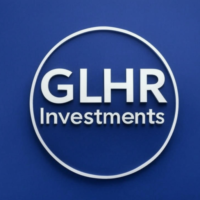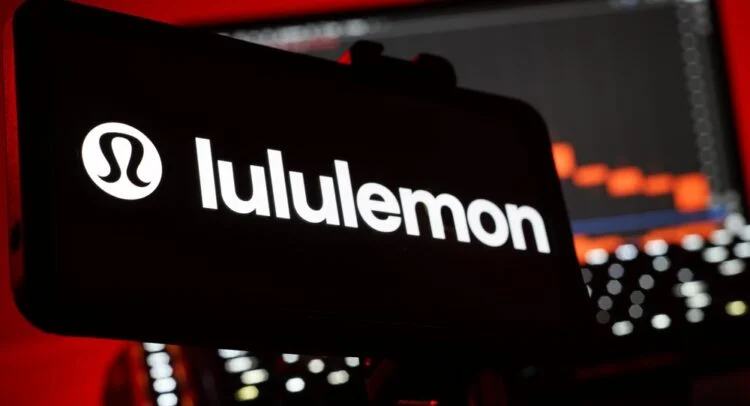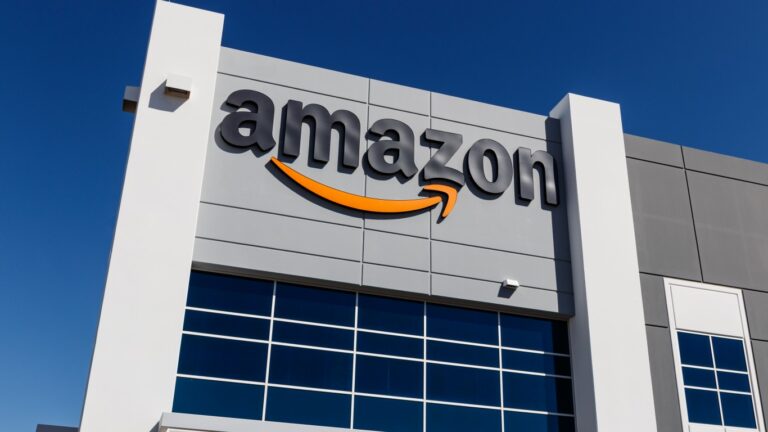High-yield dividend stocks face declines in 2025.
At GLHR Investing, we’re diving into the top 10 dividend-paying stocks that have lost value since May 2024, offering high yields but facing market headwinds. With the S&P 500 (SPY) at $513.88, down 4.8% year-to-date, Trump’s tariffs (25% on Canada/Mexico, 125% on China), and a 60% recession risk, these stocks have been hit hard, yet their dividends remain attractive for income seekers. Why are they down, and should you buy or hold if you own them? Here’s a detailed analysis of their declines, dividend safety, and investment strategies for 2025, tailored to help you navigate this volatile market.
- Economic Context (May 23, 2025):
- Market Volatility: SPY’s 15.6% YTD drop and May’s 0.87% decline (May 1–9) reflect tariff-driven uncertainty (VIX ~35), with tech down 2% and defensive sectors (utilities, staples) up 1–2%, per prior analyses.
- Tariffs: Trump’s 50% China tariff threat (May 6) and ongoing probes (semiconductors, minerals) raise import costs, hitting retail and tech while boosting domestic manufacturing, per web data. The 90-day tariff pause (ends July 7) adds uncertainty, per prior analyses.
- Inflation and Rates: Inflation at 3% with 6.7% expectations and Fed rates at 4.25–4.5% (no cuts expected, per CME FedWatch) favor high-yield stocks for income, per Morningstar.
- Recession Risk: A 60% recession probability and -0.3% Q1 GDP growth signal slowdown, boosting demand for dividends, per J.P. Morgan.
- Selection Criteria: Stocks chosen from S&P 500 and major U.S. exchanges with yields >4%, confirmed price declines from May 2024 to May 2025, payout ratios <75% (unless justified), and relevance to tariff/recession dynamics, based on web data (e.g., Motley Fool, Morningstar) and X posts.
- Top 10 Dividend-Paying Stocks Down From May 2024:
- Walgreens Boots Alliance, Inc. (WBA):
- Yield: 10.1% ($1.00/share, price: ~$9.90, May 16, 2025).
- Price Decline: Down ~45% from ~$18 in May 2024, per web data.
- Why Down: A 50% dividend cut in 2024 ended its Dividend Aristocrat status, sparking investor sell-offs. Q4 2024 showed weak retail sales amid consumer spending cuts (13%) and tariff-driven supply chain costs (healthcare products), per web data. Store closures and turnaround efforts faltered, per Motley Fool.
- Dividend Safety: Payout ratio ~70%, risky due to declining earnings (EPS -$0.50). Free cash flow ($1.2 billion) barely covers dividends, per web data.
- Buy/Hold Advice: Hold if owned; high yield is attractive, but turnaround risks and potential further cuts loom. Avoid buying until earnings stabilize (Q2 2025), per Seeking Alpha. Monitor store closure progress, per web data.
- Pfizer Inc. (PFE):
- Yield: 7.6% ($1.68/share, price: ~$22.11).
- Price Decline: Down ~30% from ~$31.50, per web data.
- Why Down: Post-COVID patent cliffs (e.g., Paxlovid) and weaker vaccine demand cut Q4 2024 revenue 5%. Tariff probes on pharmaceutical imports (April 14) raised cost fears, per web data. Market skepticism persists despite new products, per Motley Fool.
- Dividend Safety: Payout ratio ~60%, sustainable with $8 billion free cash flow. 15-year dividend increase streak, per web data.
- Buy/Hold Advice: Buy on dips near $20; undervalued (forward P/E ~10) with a robust pipeline (108 clinical programs). Hold for income and recovery by 2026, per prior analyses.
- United Parcel Service, Inc. (UPS):
- Yield: 4.8% ($1.64/share, price: ~$34.17).
- Price Decline: Down ~20% from ~$42.50, per web data.
- Why Down: Tariff-driven supply chain disruptions (25% Canada/Mexico) and a 13% retail spending drop reduced package volumes, per web data. Q4 2024 revenue fell 3%, with high labor costs from Teamsters contract, per Nasdaq.
- Dividend Safety: Payout ratio ~65%, supported by $7 billion free cash flow. 15-year dividend increase streak, per web data.
- Buy/Hold Advice: Hold if owned; healthcare logistics and SMB focus signal recovery by 2026. Buy on dips near $30 for long-term upside, per Motley Fool.
- AT&T Inc. (T):
- Yield: 6.2% ($1.11/share, price: ~$17.90).
- Price Decline: Down ~15% from ~$21, per web data.
- Why Down: High debt ($120 billion) and 5G investment costs pressured Q4 2024 margins, per web data. Consumer spending cuts and tariff fears (network equipment) added volatility, per prior analyses. Forward P/E 8.8 suggests undervaluation, per Motley Fool.
- Dividend Safety: Payout ratio ~50%, sustainable with $17 billion free cash flow. 15-year dividend increase streak, per web data.
- Buy/Hold Advice: Buy on dips near $16; domestic focus and subscriber growth (1.7 million Q4 2024) ensure stability. Hold for reliable income, per prior analyses.
- Verizon Communications Inc. (VZ):
- Yield: 6.2% ($2.71/share, price: ~$43.71).
- Price Decline: Down ~12% from ~$49.50, per web data.
- Why Down: Similar to AT&T, high debt ($120 billion) and 5G costs weighed on Q4 2024 earnings, per web data. Tariff fears on imported equipment and spending cuts (13%) hurt sentiment, per web data. Undervalued at forward P/E 8.8, per Motley Fool.
- Dividend Safety: Payout ratio ~50%, backed by $17 billion free cash flow. 15-year dividend increase streak, per web data.
- Buy/Hold Advice: Buy on dips near $40; domestic operations and scale (150 million customers) support recovery. Hold for steady income, per prior analyses.
- Kraft Heinz Company (KHC):
- Yield: 4.7% ($1.60/share, price: ~$34.04).
- Price Decline: Down ~18% from ~$41.50, per web data.
- Why Down: Tariff-driven cost hikes on imported ingredients (e.g., 54% China tariffs) squeezed Q4 2024 margins (down 2%), per web data. Consumer trade-down to generics amid 13% spending cuts hurt branded sales, per Bankrate.
- Dividend Safety: Payout ratio ~60%, sustainable with $3.5 billion free cash flow. Stable dividend backed by Berkshire Hathaway ownership, per web data.
- Buy/Hold Advice: Hold if owned; undervalued (forward P/E ~11) with recovery potential by 2026. Buy on dips near $30 if trade deals ease costs, per Motley Fool.
- Conagra Brands, Inc. (CAG):
- Yield: 4.5% ($1.40/share, price: ~$31.11).
- Price Decline: Down ~16% from ~$37, per web data.
- Why Down: Similar to KHC, tariffs on imported packaging and ingredients raised costs, cutting Q4 2024 margins, per web data. Consumer spending cuts (13%) reduced demand for premium brands (e.g., Healthy Choice), per Bankrate.
- Dividend Safety: Payout ratio ~55%, supported by $1.8 billion free cash flow. Stable dividend history, per web data.
- Buy/Hold Advice: Hold if owned; stable cash flows ensure dividend safety. Buy on dips near $28 for long-term recovery, per Motley Fool.
- Whirlpool Corporation (WHR):
- Yield: 6.7% ($7.00/share, price: ~$104.48).
- Price Decline: Down ~25% from ~$139, per web data.
- Why Down: Tariffs on imported appliances (25% Canada/Mexico) and steel costs raised production expenses, cutting Q4 2024 free cash flow (3% of sales), per web data. Housing market slowdown (median price $403,700) reduced appliance demand, per Motley Fool.
- Dividend Safety: Payout ratio ~70%, risky but supported by $500 million free cash flow. Stable since 2022, per web data.
- Buy/Hold Advice: Hold if owned; high yield is attractive, but housing and tariff risks persist. Avoid buying until housing rebounds (Q3 2025), per prior housing analysis.
- PennantPark Floating Rate Capital Ltd. (PFLT):
- Yield: 12% ($1.23/share, price: ~$10.25).
- Price Decline: Down ~10% from ~$11.40, per web data.
- Why Down: Rising rates (4.25–4.5%) and recession fears (60%) pressured BDC lending, with Q4 2024 portfolio growth slowing, per web data. Tariff-driven economic uncertainty reduced mid-market borrowing, per Motley Fool.
- Dividend Safety: Payout ratio ~100%, high-risk but backed by variable-rate loans (10.6% yield). Monthly dividends stable, per web data.
- Buy/Hold Advice: Hold if owned; high yield compensates for risk, but further declines possible. Avoid buying due to unsustainable payout, per Seeking Alpha.
- Healthpeak Properties, Inc. (DOC):
- Yield: 6% ($1.20/share, price: ~$20.00).
- Price Decline: Down ~14% from ~$23.50, per web data.
- Why Down: High mortgage rates (6.65%) and housing slowdown (sales at 30-year lows) reduced healthcare REIT demand, per prior housing analysis. Q4 2024 FFO growth slowed, per web data. Tariff costs on construction materials added pressure, per U.S. News.
- Dividend Safety: Payout ratio ~65%, sustainable with $1.5 billion FFO. Stable dividend history, per web data.
- Buy/Hold Advice: Hold if owned; undervalued with recovery potential by 2026 as rates stabilize (6.3% forecast). Buy on dips near $18, per Motley Fool.
- Walgreens Boots Alliance, Inc. (WBA):
- Why These Stocks Are Down:
- Tariff Costs: Import-reliant firms (WBA, KHC, CAG, WHR) face 25–125% tariffs, raising costs 5–20%, per J.P. Morgan. Even domestic firms (VZ, T) see equipment cost pressures, per prior analyses.
- Consumer Spending Cuts: A 13% retail spending drop and low sentiment (50.8) reduced demand for discretionary goods (WHR, KHC, CAG), per prior analyses.
- High Interest Rates: Fed rates (4.25–4.5%) and mortgage rates (6.65%) curb housing (WHR, DOC) and increase debt costs (VZ, T), per prior housing analysis.
- Sector-Specific Challenges: WBA’s turnaround struggles, PFE’s patent cliffs, and UPS’s labor costs compounded macro pressures, per web data.
- Recession Fears: A 60% recession risk and -0.3% Q1 GDP growth drove sell-offs in cyclical sectors (WHR, UPS), favoring defensive stocks, per J.P. Morgan.
- Investor Considerations:
- Dividend Safety: Most stocks (VZ, T, PFE, KHC, CAG, DOC) have sustainable payout ratios (<75%) and strong cash flows, ensuring dividend stability, per Morningstar. WBA and PFLT are riskier due to high ratios and turnaround challenges, per Motley Fool.
- Economic Outlook:
- Short-Term (3–6 Months): Tariff uncertainty (pause ends July 7) and recession risks may keep SPY volatile (-15.6% YTD), pressuring these stocks, per Schwab.
- Long-Term (1–5 Years): Trade deals (e.g., U.S.-UK, May 8) and rate stabilization (6.3% by 2026) could lift valuations, especially for telecom (VZ, T) and healthcare (PFE), per Goldman Sachs.
- Buy/Hold Strategy:
- Buy: PFE, VZ, and T for undervaluation (P/E ~8–10) and reliable dividends (6.2–7.6%), per prior analyses. Target dips (e.g., PFE <$20) for income and recovery, per Motley Fool.
- Hold: WBA, UPS, KHC, CAG, WHR, and DOC for stable dividends but monitor risks (e.g., WBA’s turnaround, WHR’s housing). PFLT’s 12% yield is tempting but risky, per Seeking Alpha.
- ETFs: Vanguard High Dividend Yield ETF (VYM, 3.59% yield) for diversified exposure to similar stocks, per Seeking Alpha.
- Portfolio Allocation: Limit to 5–10% of portfolio in these high-yield stocks, hedging with gold (GLD, +3%) or utilities (XLU, +1%) against volatility, per Morningstar.
- Monitor: Q2 earnings (July 2025), U.S.-China trade talks (ongoing), and Fed’s June 17–18 meeting for rate signals, per Edward Jones.
- Risks:
- Tariff escalations (e.g., 50% China tariff) could raise costs 10–20%, hitting margins, per J.P. Morgan.
- A recession (60% risk) may reduce consumer demand, pressuring KHC, CAG, and WHR, per prior analyses.
- High payout ratios (WBA, PFLT) risk dividend cuts if earnings falter, per Seeking Alpha.
- Why It Matters: Despite price drops of 10–45% since May 2024, these high-yield dividend stocks (4.5–12%) offer income stability in a volatile market (SPY -15.6% YTD). Tariffs, spending cuts, and recession fears drove declines, but sustainable dividends (e.g., VZ, PFE) and undervaluation make them compelling for selective investors. At GLHR Investing, we’re here to help you balance income and growth, navigating 2025’s economic challenges with strategic picks.
Secure your income with GLHR Investing—let’s thrive in turbulent markets!
Disclaimer: GLHR Investing is not a financial adviser; please consult one.







